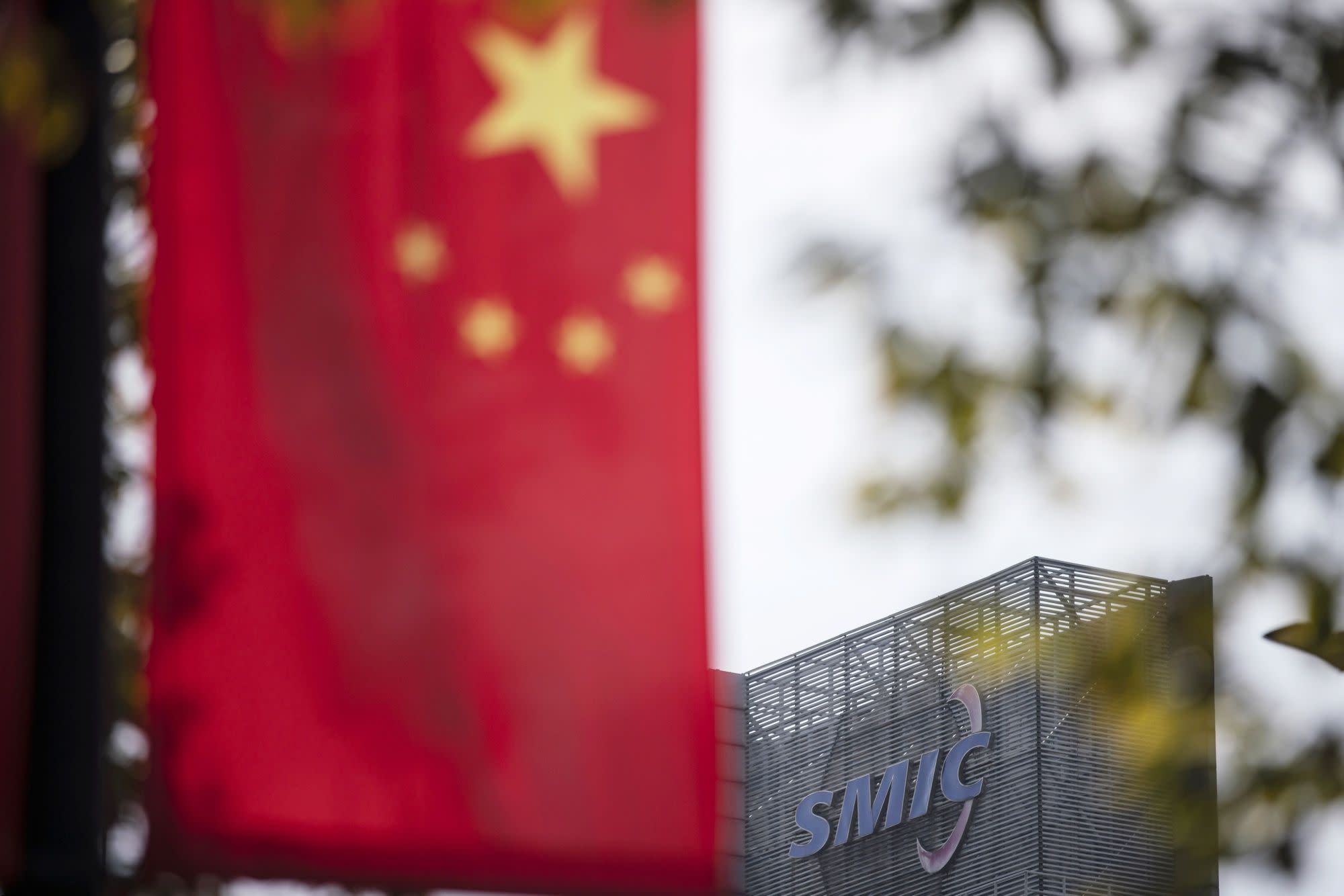Top China Chipmaker Surges as Supply Crunch Brightens Outlook

(Bloomberg) — Semiconductor Manufacturing International Corp. jumped as much as 10% in Hong Kong after raising its annual sales outlook, as a prolonged global chip shortage drove up prices of chipsets.
Revenue at China’s biggest chip foundry rose 43% to $1.34 billion in the three months ended in June from a year earlier, beating the $1.3 billion average of analysts’ estimates. Net income almost quintupled to $687.8 million. The company raised its targets for annual revenue growth and gross margin to 30%.
Shanghai-based SMIC is China’s best hope for gaining clout in advanced chips used in devices from smartphones to base stations. Its capacity and technical know-how are crucial to helping Beijing overcome a U.S.-led effort to curb its tech ambitions. But the company has been unable to get key machinery and materials to keep advancing its technology, after the U.S. placed it under sanctions last year on national security grounds.
The U.S. government has delayed some of SMIC’s procurement requests for important 14-nanometer and 28 nanometer machines, co-Chief Executive Officer Zhao Haijun said on an earnings call on Friday, without giving reasons. “SMIC will be able to get approvals on certain nodes. Our job is to make it happen,” he said, adding the company is also exploring alternative suppliers.
Shares of SMIC were up 5% at noon in Hong Kong. They have rallied about a third this year as investors bet that semiconductor firms will benefit from state largesse even as Beijing pursues a broader crackdown in the tech sector that’s ensnared the likes of Alibaba Group Holding Ltd. and Tencent Holdings Ltd.
What Bloomberg Intelligence Says:
Potential for more price increases and hopes for fast capacity expansion in 4Q may make SMIC’s guidance conservative. The company’s new sales-growth guidance of 30% implies at least a 5% sequential decline in 4Q sales. This is quite unlikely in our scenario analysis. Global semiconductor-supply tightness, especially in mature-node chips, looks likely to extend to 2022. This would allow another round of price increases in 2H21.
— Charles Shum and Simon Chan, analysts
Click here for the research
Achieving self-reliance in chipmaking is a top priority for China, which sees tech self-sufficiency as key to fending off growing threats from the U.S. Chinese President Xi Jinping tapped one of his most-trusted lieutenants, Vice-Premier Liu He, to oversee an initiative aimed at helping domestic chipmakers overcome American sanctions, Bloomberg has reported.
The inability to obtain machines and materials from key overseas suppliers has been a thorny issue for SMIC since the Trump-era blacklisting. In April, Lam Research Corp. told analysts it was waiting to hear back from the U.S. government about its application for a license to export to SMIC. However, non-U.S. equipment vendors aren’t similarly restricted. In March, SMIC said its purchase agreement with Dutch supplier ASML Holding NV has been extended to Dec. 31, although the latter still hasn’t obtained a license to ship the advanced extreme ultraviolet systems required to make cutting-edge chips to China.
The firm is currently able to manufacture chips using 14nm technology — still generations behind industry leader Taiwan Semiconductor Manufacturing Co. — but the U.S. blacklisting has limited its ability to expand into more advanced nodes. Instead, SMIC is trying to improve its packaging technology, to help beef up the performance of chips made by mature technologies.
SMIC’s plants are operating at full capacity as chip shortages spread from electric vehicles to electronic equipment including servers and smartphones. In March, the foundry announced a plan to build a $2.35 billion factory in south China’s Shenzhen that will be able to make as many as 40,000 12-inch wafers per month. The project will be partially funded by the local government.
More stories like this are available on bloomberg.com
Subscribe now to stay ahead with the most trusted business news source.
©2021 Bloomberg L.P.



